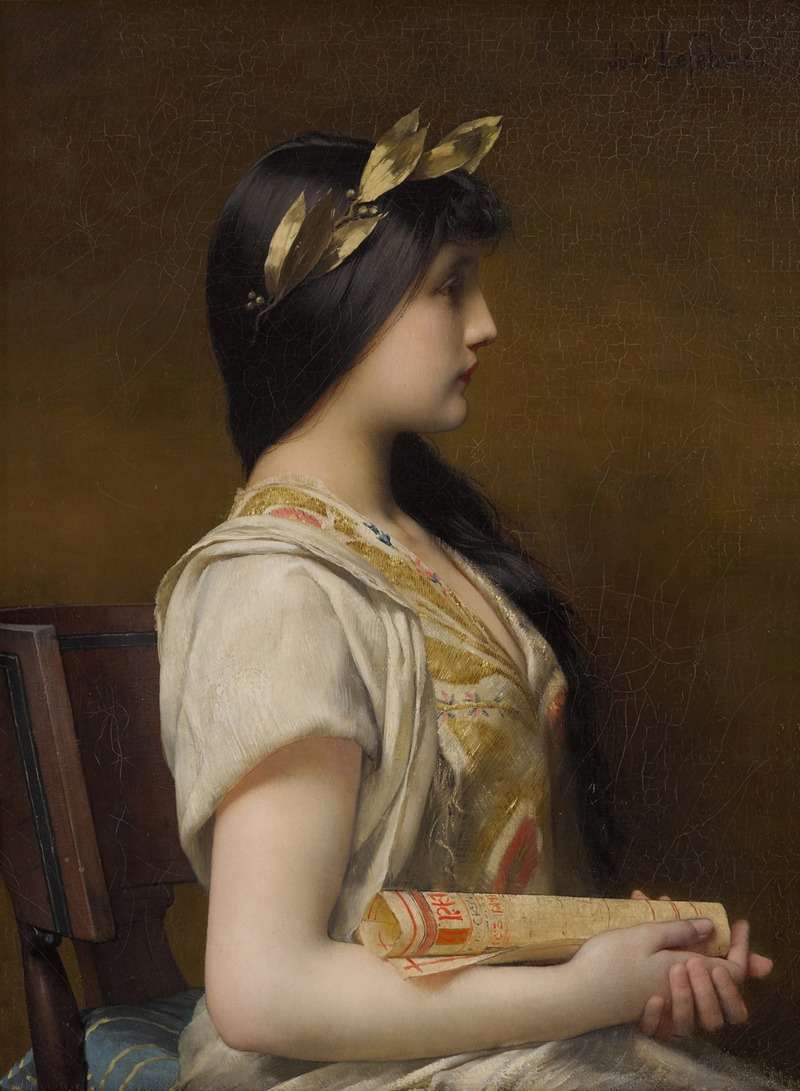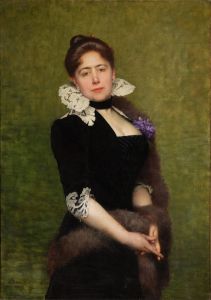
Sappho
A hand-painted replica of Jules Joseph Lefebvre’s masterpiece Sappho, meticulously crafted by professional artists to capture the true essence of the original. Each piece is created with museum-quality canvas and rare mineral pigments, carefully painted by experienced artists with delicate brushstrokes and rich, layered colors to perfectly recreate the texture of the original artwork. Unlike machine-printed reproductions, this hand-painted version brings the painting to life, infused with the artist’s emotions and skill in every stroke. Whether for personal collection or home decoration, it instantly elevates the artistic atmosphere of any space.
Jules Joseph Lefebvre's painting "Sappho" is a notable work by the French academic painter, created in 1877. Lefebvre, born in 1836, was a prominent figure in the academic art scene of the 19th century, known for his portraits and figure paintings that often depicted mythological and historical subjects. His works are characterized by their meticulous attention to detail, smooth brushwork, and idealized forms, reflecting the academic standards of his time.
"Sappho" portrays the ancient Greek poetess Sappho, who lived on the island of Lesbos around 630-570 BCE. Sappho is one of the most celebrated lyric poets of antiquity, renowned for her poetry that explored themes of love and passion. Although much of her work has been lost, her legacy endures through the fragments that remain, which continue to influence literature and art.
In Lefebvre's painting, Sappho is depicted in a contemplative pose, seated by the sea, which is a recurring motif in representations of the poetess, symbolizing her connection to the island of Lesbos. The painting captures a moment of introspection, with Sappho holding a lyre, an instrument commonly associated with her, emphasizing her role as a musician and poet. The serene expression on her face and the gentle drapery of her clothing reflect Lefebvre's skill in conveying emotion and texture, hallmarks of his academic style.
The painting is executed with a soft color palette, utilizing delicate shades to create a harmonious composition. Lefebvre's use of light and shadow adds depth to the scene, highlighting the contours of Sappho's figure and the folds of her garments. This attention to detail and the idealized portrayal of the subject are indicative of Lefebvre's adherence to the academic tradition, which valued technical proficiency and classical beauty.
"Sappho" was exhibited at the Salon of 1877, a prestigious annual art exhibition in Paris that showcased the works of leading artists of the time. The Salon was a significant event in the art world, influencing public taste and the careers of artists. Lefebvre's participation in the Salon and the positive reception of his works contributed to his reputation as a leading academic painter.
Today, "Sappho" is housed in the collection of the Musée d'Orsay in Paris, a museum renowned for its extensive collection of 19th-century art. The painting remains an important example of Lefebvre's oeuvre and a testament to the enduring fascination with Sappho as a cultural and literary icon. Through his depiction of Sappho, Lefebvre not only pays homage to the ancient poetess but also exemplifies the academic art style that dominated the 19th-century French art scene.

















